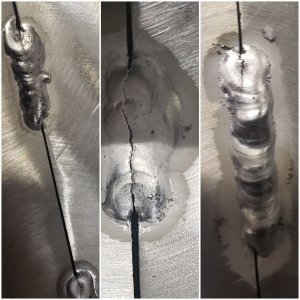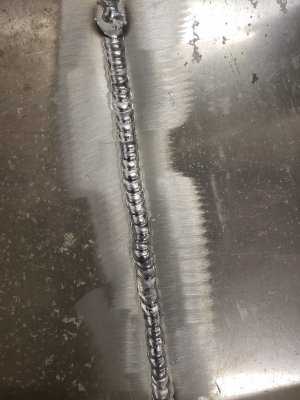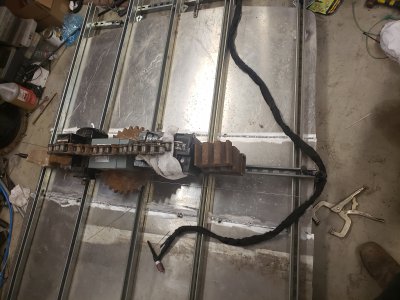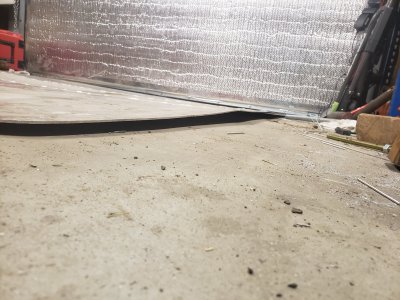Here's some lessons learned from the experience. Maybe some of you will benefit from my sharing...
1. Get about 30 TIG electrodes, sharpen all of them, and keep them at arms length. That way you don't have to make 30 trips back to the bench grinder for the 30 times you jab the filler into the electrode, or the electrode into the puddle. This is assuming you're as dextrously challenged as I am.
2. 6061 is prone to hot cracking, so when welding it your weld should have lots of filler (4043), more filler than parent metal. For sheets of this thickness the cuts should be beveled. I didn't bevel mine and learned the hard way. This is what my first welds looked like:

It didn't help that I was laying on my belly across this criminally uncomfortable unistrut jig and therefore forced to use the torch with ON/OFF finger switch. Hot cracking can be minimized by using a foot pedal and tapering off the arc at the end so you don't get that divot - the divot is where the cracking starts.
Since I didn't know that about 6061 hot cracking I didn't know that I should've beveled this until it was too late. So what I did was just use way more filler than I normally would, and that seemed to be a good enough bandaid although my welds are now really tall and probably don't have very good penetration. Still, I think it will be good enough. This is what my welds looked like after I got my "process," eh... "perfected."

3. Of course the usual: cleanliness, cleanliness, cleanliness. Have a dedicated grinder wheel, flap disk, wire wheel, and stainless wire brush labeled "for aluminum only." Wash joints and filler rods with acetone right before welding. I like to think that if I did only one thing right, it was cleanliness.






